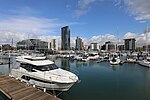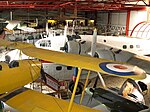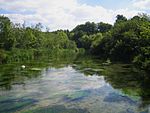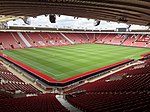Woolston Floating Bridge

The Woolston Floating Bridge was a cable ferry that crossed the River Itchen in England between hards at Woolston and Southampton from 23 November 1836 until 11 June 1977. It was taken out of service after the new Itchen Bridge was opened. Initially there was one ferry, built and owned by the Floating Bridge Company, increased to two in 1881. In 1934 they were sold to Southampton Corporation.In the 1970s two diesel ferries operated side by side during the day with a single ferry late in the evening. There was a bus terminus at both hards on either side of the crossing, connecting foot passengers with the centre of Southampton and the road to Portsmouth. A maintenance slipway and cradle were built to the North of the Woolston hard to enable the ferries (or "Bridges") to be hauled out of the water. The third (or spare) diesel ferry was often to be found moored off the wires on the Southampton side of the river to the North of the hard in later years.
Excerpt from the Wikipedia article Woolston Floating Bridge (License: CC BY-SA 3.0, Authors, Images).Woolston Floating Bridge
Floating Bridge Road, Southampton St Mary's
Geographical coordinates (GPS) Address Nearby Places Show on map
Geographical coordinates (GPS)
| Latitude | Longitude |
|---|---|
| N 50.898811 ° | E -1.386928 ° |
Address
Itchen Bridge
Floating Bridge Road
SO14 3FL Southampton, St Mary's
England, United Kingdom
Open on Google Maps









